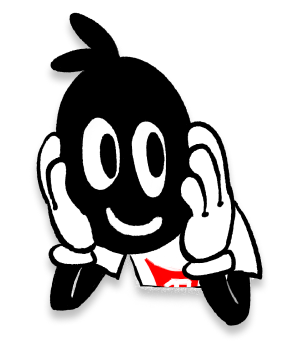Split Fiction Review
The Nintendo Switch 2 released several weeks ago, and we’ve seen so many debates over the physical game “download key” issue, that everyone forgot to concentrate on how powerful this handheld device actually is when it comes to actually playing the games.
I had the chance to play Split Fiction over the last week or so and I am extremely impressed by the quality of the game on this device. The game was developed by Hazelight Studios, and released officially on March 06, 2025. It was then released on June 05, 2025 on the Nintendo Switch 2 and Nintendo fans are now lucky enough to experience the game in 4K/60fps as opposed to the 1080p resolution it often failed to render.
Split Fiction is just what I wanted to try as my first Nintendo Switch 2 title. The game is exclusively built for cooperative multiplayer and utilizes a fixed split-screen display, with no option to toggle or revert to a single-player or unified screen mode. I personally am not a big fan of split-screen games, so adjusting to this one was quite difficult—especially when playing in handheld mode. If you’re like me, you might not enjoy it much that way.
However, switching to docked mode on the Switch definitely helped improve the experience. You are able to play it by either gameshare, online co-op or couch co-op. I personally utilized gameshare and it was extremely easy to set this up. Do be warned though that playing this on the Switch 1 is practically impossible, the game struggles with performance issues like lag and low frame rate, which seriously hinders your gameplay experience.
I think book lovers would enjoy playing Split Fiction because the game is based on two writers, Mio and Zoe, who are lured into this tech company called Rader Publishing. The company utilizes a machine to stimulate worlds based on writers’ ideas, but its true purpose is to steal those ideas.
The game alternates between Mio’s sci-fi world and Zoe’s fantasy world, overcoming challenges and learning to cooperate. Zoe is my preferred character because I found her the most relatable. My love for writing and fantasy literature made this game especially meaningful to me, turning it into one of my personal favorites.
Although Split Fiction is the successor to It Takes Two and has received mixed opinions, I actually enjoyed it more—probably because I never played the original. Given my well-known passion for Metroidvanias, I found the platforming mechanics to be exceptionally polished—challenging yet enjoyable—with design elements that faithfully capture the genre’s hallmark precision and depth.

Each character’s ability to jump, double jump, and air dash turns the game into a demanding platformer that places a strong emphasis on cooperation between both players. Other abilities are tied to wall runs, grappling hooks, swings and slingshots which were extremely fun to maneuver while rails, poles and tiny landing spots that are extremely missable so be prepared for a hair-pulling, extremely challenging experience.
Besides the difficulty of the platforming added with the possible low framerate by playing on a system that might not handle this type of game, this game makes an extremely fun co-op, that particularly gears toward players of different skill levels.
When you fall behind, and die in this game, while the other player is still alive, the game just respawns you next to the other player. If both players die at the same time, you are still respawned in the level you are in, so dying is not the challenge of this game, but rather getting through the objectives.
For me, this approach works perfectly—having to redo entire levels would have made the tough platforming feel frustrating rather than rewarding. Keeping progress intact makes the challenge feel satisfying instead of tedious.
Split Fiction really kept things fresh and engaging— it never dragged on long enough to feel boring. In fact, every time I put the game down to go about my day, it kept calling me back, making me want to jump right back in.
With a playtime of around 14 hours for the main and side story– and only about an hour more for completionists— Split Fiction is relatively short. But its charm and accessibility make it a great co-op experience, even for family members who aren’t regular gamers. I mean look at me, I was so enthralled in the game that I even forgot to take screenshots, because I was too busy concentrating on the gameplay of the game.

There are a few downsides, like how falling behind can make the split-screen disorienting, or how certain areas can feel overwhelming due to intense visuals or sounds. However, despite these minor issues, the game remains a fun and engaging experience— especially when played cooperatively with the right person.
Overall, I think Split Fiction is definitely a game you should pick up if you are a proud owner of the Nintendo Switch 2, however, please note that the physical version of the game doesn’t come with a cartridge— instead, it includes only a download code. So be prepared to choose between the physical box with a digital code or buying the game digitally, both priced at $49.99 USD / 64.99 CAD, which might feel underwhelming if you were expecting a full physical edition.
NaggyAlie has been writing with GamesReviews for sometime now – expect more from them in the future as we continue to look at Nintendo Switch and Nintendo Switch 2 experiences!
Twitch: https://Twitch.tv/Naggyalie
YT: https://YouTube.com/indieswithalie
Twitter: https://x.com/IndieswithAlie


